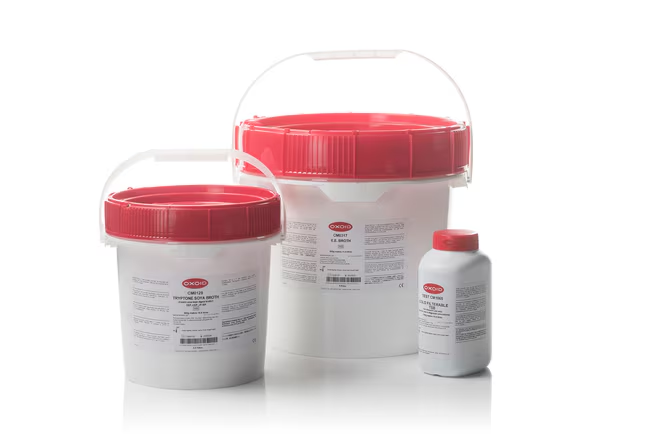
Cultivate and isolate Bordetella pertussis and Haemophilus influenzae with Thermo Scientific™ Oxoid™ Charcoal Agar Base (Dehydrated). The medium is designed to provide a non-blood containing medium for the cultivation of Bordetella pertussis and Haemophilus influenzae. Nicotinic acid in the medium acts as essential growth factor for Bordetella1.
Haemophilus and Bordetella are small, gram-negative rods that tend to assume a coccobacillary shape. Members of both genera contain species exclusively found in humans and cause respiratory tract infections. The major species are Haemophilus influenzae, the cause of acute purulent meningitis, and Bordetella pertussis, the cause of whooping cough.
Charcoal Agar was developed by Oxoid to provide a non-blood-containing medium for the cultivation of Bordetella pertussis and Haemophilus influenzae. Proom1 showed that nicotinic acid was an essential growth factor for the bordetellae. Ensminger et al.2 used a charcoal medium for the growth of Bordetella pertussis in vaccine production and found that the medium could replace Bordet-Genou. Mishulow et al.3 used charcoal agar for Bordetella pertussis cultivation.
Haemophilus influenzae is cultivated on the medium containing 10% chocolated blood but no antibiotics. The inoculated plate is incubated for 2 to 3 days at 37°C. The colonies are usually small, transparent, and droplet-like, but some transformation to the ‘rough’ type colony may occur. Species differentiation is performed by examination of the need for X and V growth factors, on Blood Agar Base CM0055.
The greatest problem in the isolation of Bordetella species from naso-pharyngeal secretions is the suppression of unwanted flora during the long incubation period on very nutritious media.
Fleming’s first in vitro demonstration of penicillin was to show that it could help isolate Bordetella pertussis on media4. Lacey5 confirmed this but found that the penicillin-resistant flora still caused problems. He supplemented penicillin with 2μg/ml 4,4’ diamidino-diphenylamine dihydrochloride (M & B 938) thereby increasing the selectivity of this medium.
Broome et al.6 found methicillin to be superior to penicillin in suppressing unwanted naso-pharyngeal flora but the earlier publication of Sutcliffe and Abbott7 where cephalexin (40μg/ml) was shown to be superior to penicillin, has proved to be the most significant advance.
The benefits of cephalexin as a selective agent for Bordetella pertussis have been confirmed 8,9,10,11. The ability to recover stressed cells and the much longer shelf life (6-8 weeks) are added benefits to its superiority at suppressing unwanted naso- pharyngeal growth.
| Code | Description |
|---|---|
| CM0119B | Catalog Number: CM0119B Unit Size: Each Quantity: 500 g |

